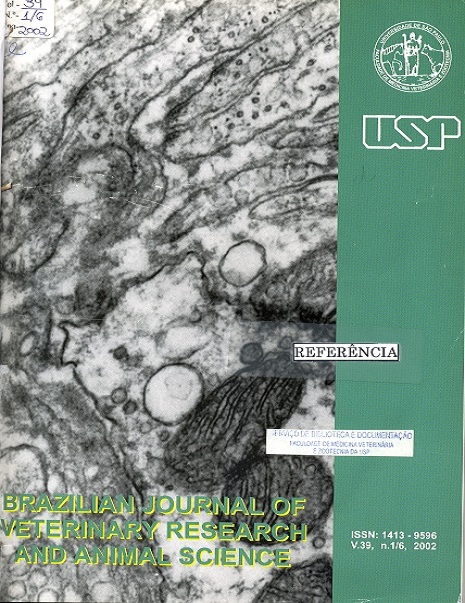Inquiry of cases of myiasis by Cochliomyia hominivorax in dogs of the southern zone of Rio de Janeiro city in 2000
DOI:
https://doi.org/10.1590/S1413-95962002000400002Keywords:
Dog, Myiasis, Cochliomyia hominivorax, Screwworm, InquiryAbstract
An inquiry about the cases of myiasis by Cochliomyia hominivorax larvae in dogs presented to 34 veterinary establishments of the Southern Zone of Rio de Janeiro municipality in 2000 was performed, to identify predisposing factors and to contribute to the comprehension of the epidemiological features and prevention of this disease. In 31 establishments, at least one case of myiasis by Cochliomyia hominivorax larvae in dogs was presented. Adult, dark and short-haired, and pure breed dogs, living in houses, were the most infested, but no predilection for sex was noticed. Ears were the most affected, due to otitis. Occurrence was higher in warmer weather months of the year. Most owners did not try to treat their pets by themselves, and adequate treatment of the wound, prescribed by the clinician, led to short healing period and absence of complications during and after the treatment. Myiasis is seen as a consequence of owner's negligence, but some dogs had already presented this disease before. It is necessary to develop prevention programs against screwworm infestation based on identified predisposing factors, such as phenotypical features of infested animals and body regions more affected. Causes that lead to larvae infestation, such as otitis and wounds, should be avoided and environment hygiene must be maintained. Besides, prevention programs should be intensified during the months of the highest incidence of the disease.Downloads
Download data is not yet available.
Downloads
Published
2002-01-01
Issue
Section
UNDEFINIED
License
The journal content is authorized under the Creative Commons BY-NC-SA license (summary of the license: https://
How to Cite
1.
Cramer-Ribeiro BC, Sanavria A, Oliveira MQ de, Souza FS de, Rocco F da S, Cardoso PG. Inquiry of cases of myiasis by Cochliomyia hominivorax in dogs of the southern zone of Rio de Janeiro city in 2000. Braz. J. Vet. Res. Anim. Sci. [Internet]. 2002 Jan. 1 [cited 2024 Apr. 19];39(4):171-5. Available from: https://www.revistas.usp.br/bjvras/article/view/5962





